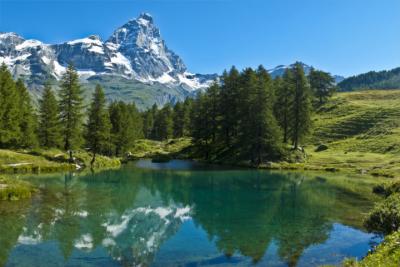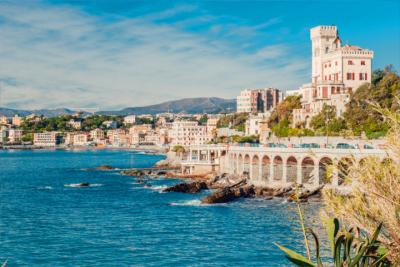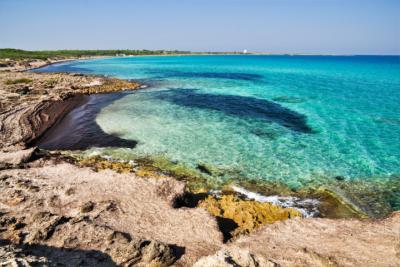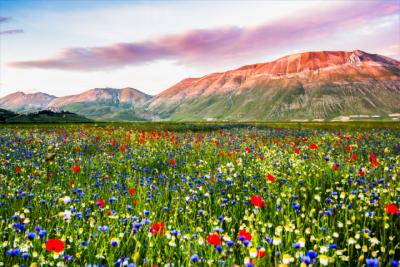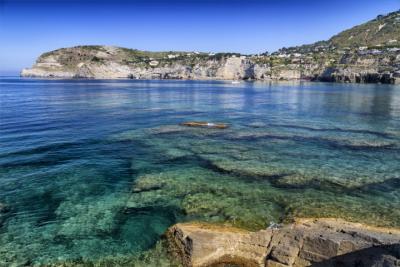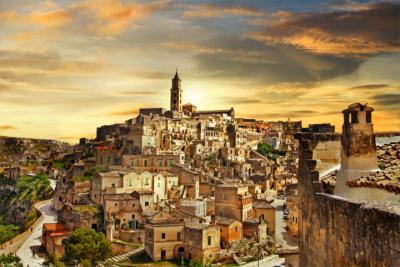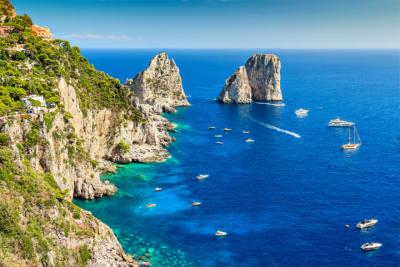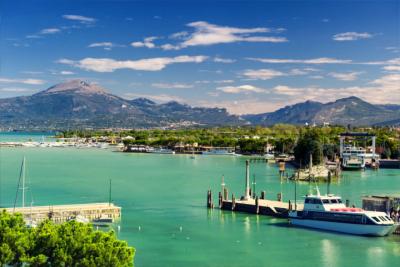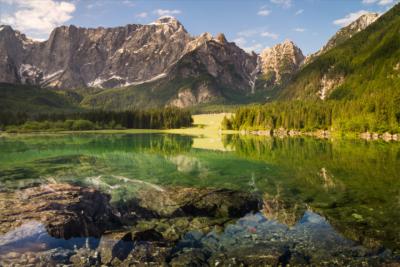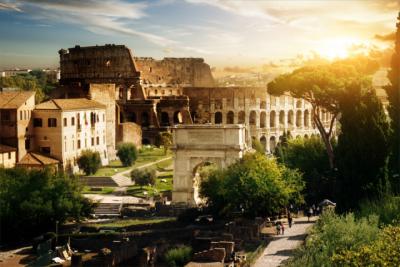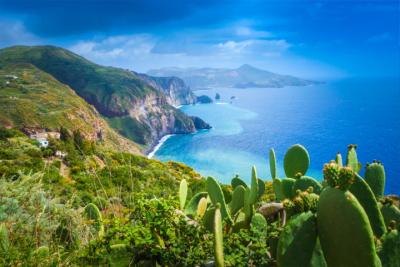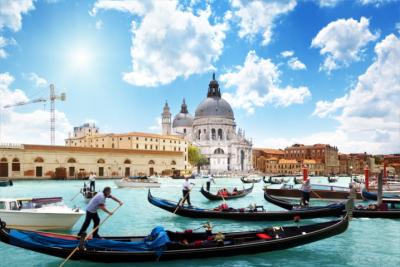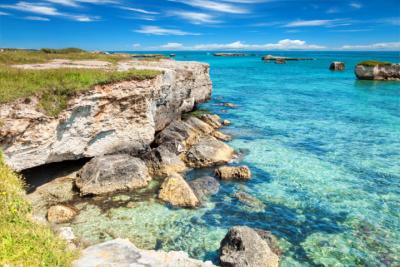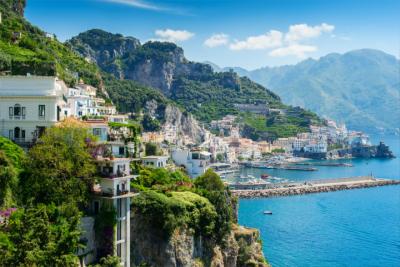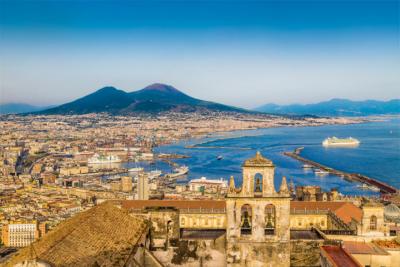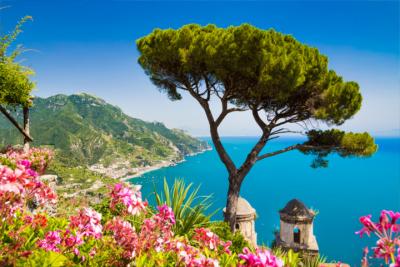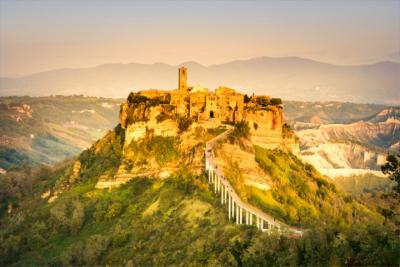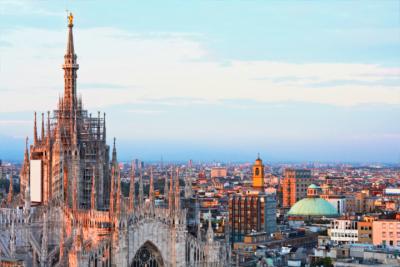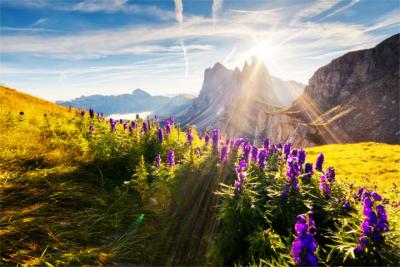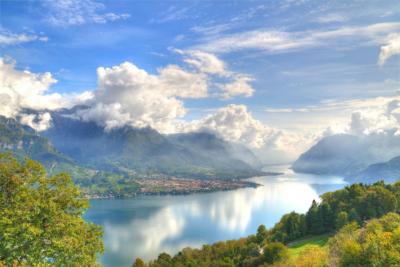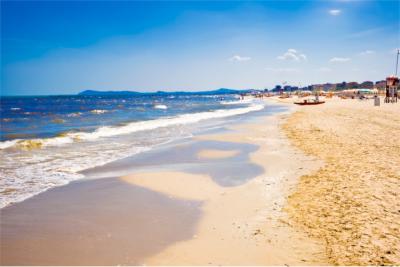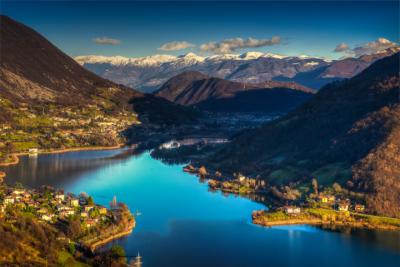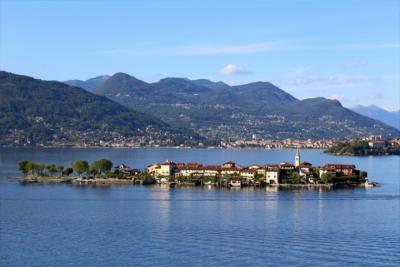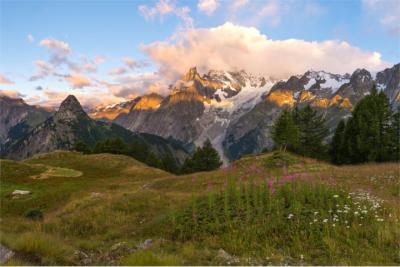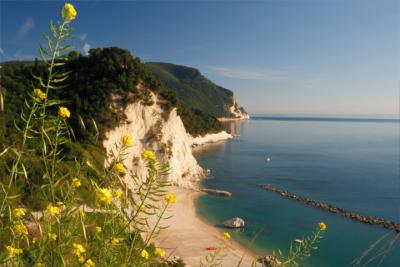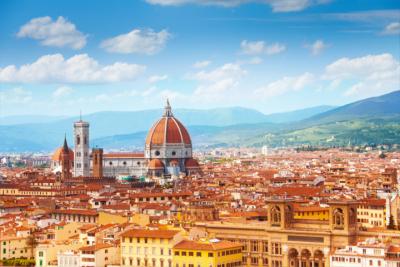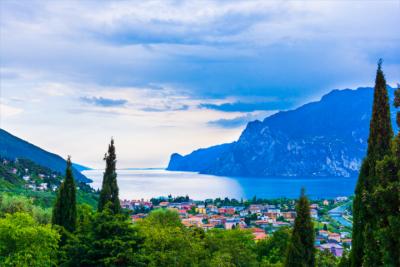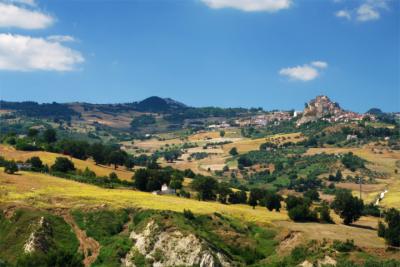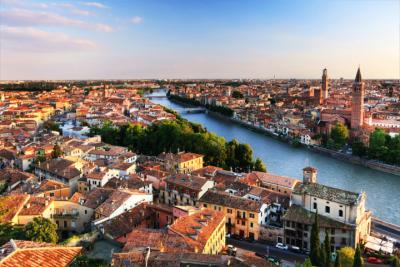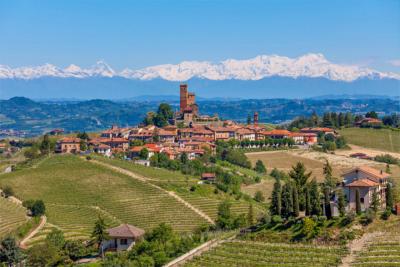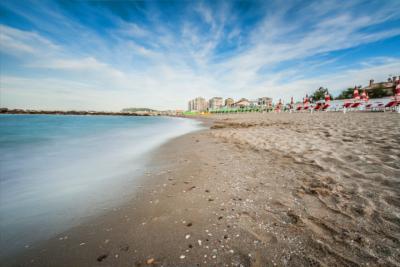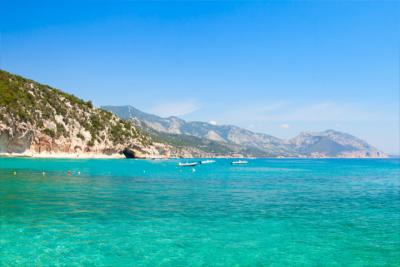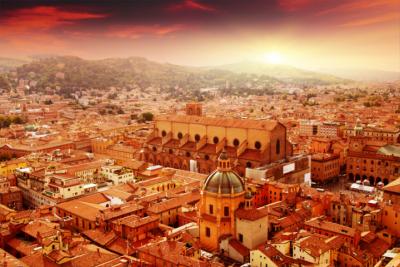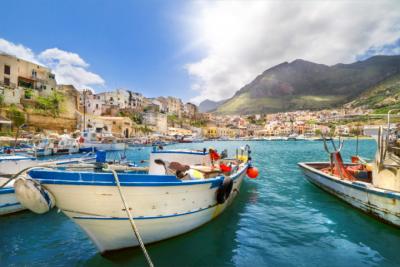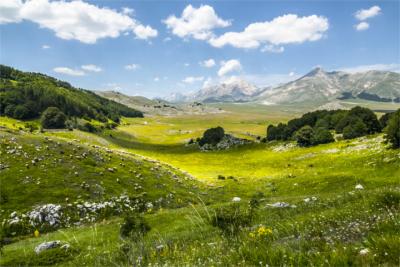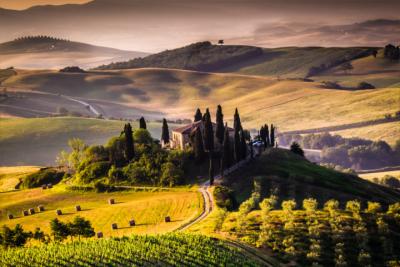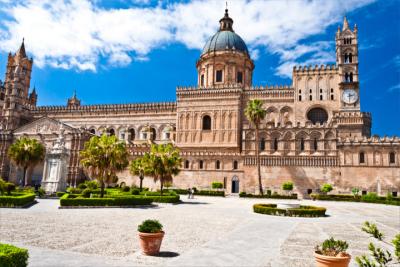Travel Offers
Travelmyne Featureprint
Distance
Salento - A Boot Heel Lined With Coasts
Salento, Italy's boot heel, is known for its white, chalky coasts, bright beaches and baroque towns. All this in addition to the Greek architecture and the traditional handicraft make the peninsula the ideal travel destination for cultural summer holidays.
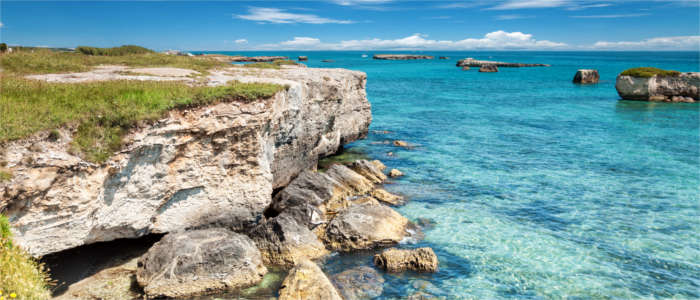
Geography - 250 kilometres of coast in the south-east of Apulia
Salento is a peninsula in the south of Italy, which is 100 kilometres long and 40 kilometres wide. It is part of the region of Apulia and lies in the province of Lecce as well as partly in the provinces of Taranto and Brindisi. The peninsula is considered the heel of the Italian boot, whose coast is about 250 kilometres long and has its southernmost point at the Punta Ristola. Located between the Ionian and the Adriatic Sea, Salento is dominated by Mediterranean climate with long, dry and hot summers as well as mild and short winters.
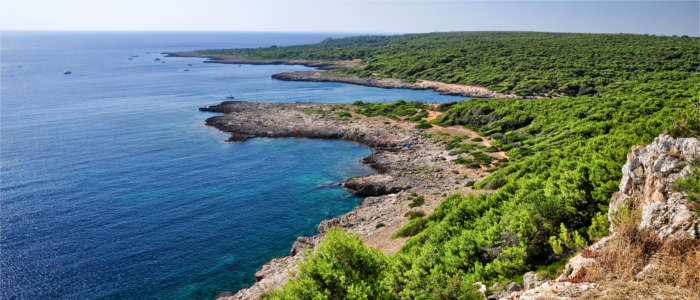
Nature - White sandy beaches and bright chalk cliffs
Salentos' coastal landscape is characterised by steep chalky rocks, bizarre rock formations, crystal clear water as well as mystical caves and grottoes. The bright, rocky chalk cliffs alternate with scenic bays and long, fine, white sandy beaches. Flat plains with numerous shrubs and flowering plants are also part of Salento's nature.
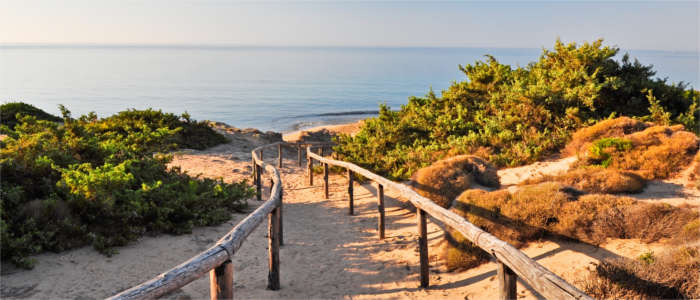
Culture - Greek and Baroque architecture
Salento Peninsula was settled by the Greeks, Byzantines and the Messaps in the course of history. The latter, a tribe of farmers, horse breeders and potters from Illyria, were the first inhabitants of the boot heel. Many buildings bear testimony to the cultural influence of the different tribes to the present day. The traditional residential houses, for example, are based on Greek architecture. You see many whitewashed facades and flat roofs in Salentos's landscape. A popular travel destination is the baroque city of Lecce. Due to its impressive baroque buildings made of bright, yellowish red tuff (pietra leccese) and the many artistically decorated churches, the city is also called "Apulia's Florence". The Basilica di Santa Croce, the Palazzo del Seminario and the cathedral at the Piazza del Duomo are among the main attractions of the province's capital. Other worthwhile towns on Salento are Otranto with the Castello Aragonese, which is located on a cliff, the white village of Ostuni and the idyllic seaport town of Gallipoli.
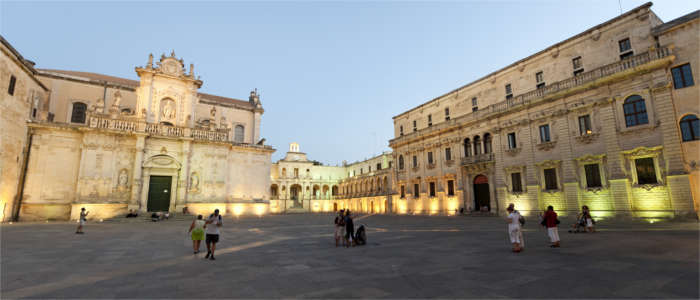
Experience - Traditional handicraft and sweet delicacies
Handicraft such as pottery, basketry, weaving, embroidery and forging are very common on Salento, especially terracotta and ceramic ware. Lecce's tradition, on the other hand, is the production of figures of saints and crib figurines from papier-mâché (cartapesta). These are easier to carry during processions than figures made of wood or stone. They are produced in about 20 workshops in Lecce's old town. Salento's cuisine mainly consists of different salads, vegetables, legumes (chickpeas, beans) and pasta. In addition, fish as well as rabbit, lamb and horse meat are part of many meals. Typical desserts or snacks people have with coffee or wine are short pastries filled with marzipan or brittle, cupeta (sweets made of caramel and almonds) and taralli (ring-shaped pastry with icing).

Activities - Swimming and diving in the Adriatic and Ionian Sea
Salento offers excellent conditions for all kinds of water sports. Surfing, swimming, kayaking, diving or sailing are possible leisure activities in and on the water. On the mainland, travellers can go on hiking and cycling tours.
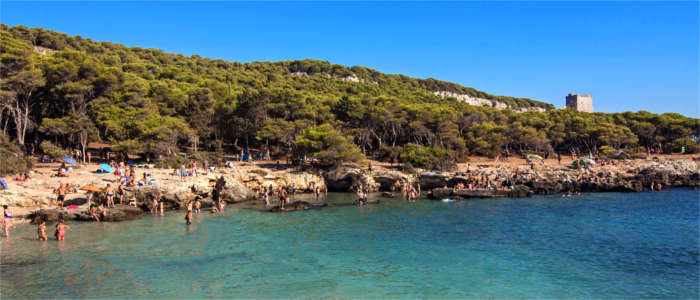
Information
In general, a trip to Salento Peninsula is a good idea at any time of the year. The Mediterranean temperatures are the reason why it is pleasant and never too cold, not even in winter. However, travellers should note that August is peak season, which means that the beaches are often overcrowded at that time. The temperatures are often higher than 30 °C, which is not everyone's cup of tea. The best time to enjoy the combination of beach and active holidays are the months from May to July and September.
Geographically speaking, the southern boot heel is at the lower end of Italy but with regard to tourism it is at the very top. The peninsula is ideally suited for sun-worshippers, beachgoers and water sports fans. Due to its Baroque towns as well as its medieval castles and churches, culture enthusiasts do not go short on Salento either.

